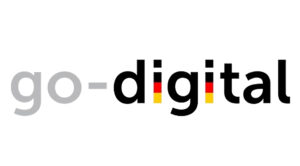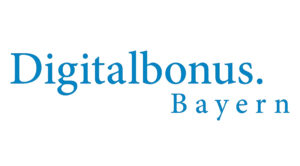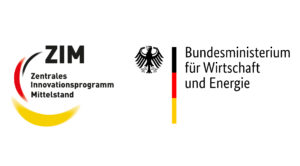
Our Design Thinking Workshop is specifically designed to develop a deep understanding of the requirements and challenges of your project. This process is divided into two central phases, which ensure that all solutions are both innovative and practice-orientated.
Through this detailed and methodical approach in the design thinking workshop, we ensure that the solutions developed are not only technically feasible, but also optimally tailored to the needs of the users.
Our approach to consulting and planning aims to create a sound basis for decision-making when choosing the development process and to ensure that the project is implemented efficiently and purposefully. This phase is divided into two key areas that ensure the strategic direction and precise planning of the project.
Through this comprehensive and strategic advice and planning, we ensure that your project is built on a solid foundation from the outset and that everyone involved is optimally prepared for the challenges ahead.
The careful composition of the team of experts is a decisive factor for the success of your project. This process involves two key steps to ensure that the team has both the technical skills and the necessary industry knowledge to effectively realise your specific requirements.
Through this strategic and well thought-out composition of the team of experts, we guarantee that your project is supported from the outset by comprehensive expertise that takes into account both the technical requirements and the industry-specific characteristics. This maximises the project's chances of success and ensures high-quality implementation.
A carefully planned and well thought-out high-level software architecture is essential for the scalability, performance and security of a software solution. This planning phase is divided into two main areas to ensure that the architecture and infrastructure meet the technical requirements and business objectives.
Through this detailed planning of the software architecture and system infrastructure, we ensure the technical excellence and future viability of your solution. This makes it possible to fulfil both current and future requirements efficiently and securely and forms the technological basis for the success of your project.
A well-designed API (Application Programming Interface) is the backbone of any modern software solution, ensuring seamless integration and scalability. In our API design process, we focus on two main aspects: the development of a robust API strategy and the implementation of this strategy through precise specifications.
Through this structured approach to API design, we ensure that the developed interface not only fulfils the technical requirements, but also enables seamless and secure interaction between all components of the system. This forms a solid basis for the efficient and flexible development and expansion of your digital solutions.
Prototyping is an essential step in the development process that enables design and functionality concepts to be visualised and tested at an early stage. This process is divided into two main phases: the creation of interactive prototypes and the iterative review and adaptation of these prototypes.
The development of the front end focuses on creating an appealing and intuitive user interface that provides an optimal user experience. This process is divided into two key phases: implementing the design and ensuring quality and performance.
Through this careful and methodical approach to front-end development, we ensure that the application is not only functionally robust, but also aesthetically pleasing and user-friendly. Our strategies aim to promote seamless and engaging user interaction, which ultimately contributes to the satisfaction of your end users.
Continuous Integration and Continuous Deployment (CI/CD) are central components of modern software development that enable software changes to be brought into production faster and more reliably. Our CI/CD process is divided into two main phases: setting up the CI/CD pipeline and implementing and automating the release processes.
By implementing a robust CI/CD process, we ensure that your software development projects can be carried out agilely, efficiently and with minimal risk. This process significantly reduces time-to-market while improving the quality and reliability of the software.
Penetration testing (pen testing for short) is a crucial measure to ensure the security and integrity of software applications. This process is divided into two important phases: the planning and execution of the pen test and the analysis and implementation of the results.
Through this systematic and thorough approach to pen testing, we ensure that your software solutions are not only functionally efficient, but also robustly protected against current and potential security threats. This is essential to increase user confidence in your digital products and fulfil regulatory requirements.
The operational management of software solutions ensures that your applications run smoothly and are continuously optimised. This crucial aspect of the software lifecycle is divided into two main phases: the handover and introduction of the operations team and the ongoing management and maintenance of the systems.
Through these comprehensive measures in the area of operations, we ensure that your applications are always highly available, secure and state of the art. Our aim is to maximise operational excellence and thus create the basis for the long-term success of your digital solutions.
Our e-learning platforms are designed to transform educational processes and make the most of the latest technologies. We understand that every educational project is unique, so we develop customised platforms that are tailored to our clients' specific requirements and goals. Our team of experienced software developers will work closely with you to create a user-friendly and interactive platform. From conception to design and implementation, we offer a comprehensive service that focuses on quality, usability and scalability.
Our e-learning platforms include a variety of features that make learning engaging and effective. These include interactive learning modules, live webinars, progress tracking, gamification elements, discussion forums, virtual classrooms and much more.
We also attach great importance to security and data protection. Our platforms are developed with the latest security standards to ensure the confidentiality and integrity of user data. Our goal is to create e-learning platforms that take education to a new level. Whether for schools, businesses or organisations, our solutions are designed to make learning more efficient, accessible and engaging.
If you would like to find out more about our e-learning platforms or are planning a customised education project, we are happy to help. Contact us today to discuss your requirements and explore innovative ways of training together.
An upload portal is more than just a standard solution; it is a customised service based on your company's specific needs and processes. Our goal is to work with you to develop a portal that optimises and improves your file transfer and data collection processes. Our team of experienced developers will start with a thorough analysis of your requirements. We listen carefully to understand your goals, workflows and security requirements. Based on these insights, we design a customised upload portal that fits your business perfectly.
The upload portal is specifically designed to provide a user-friendly experience while protecting your sensitive data. We implement robust security measures, including encrypted transmissions and access controls, to ensure the confidentiality and integrity of your data. Our focus is to provide you with a solution that improves your workflows and helps you work more efficiently. You can use our upload portal to receive large files from customers, collect feedback, share information securely and much more.
Our team of experienced developers works to utilise the latest technologies and best practices to create customised communication solutions that are perfectly tailored to our clients' needs. When it comes to developing a communication management system, we understand the complexity and importance of this task for your organisation. An effective communication management system enables seamless and efficient communication both internally and externally. It helps to optimise the flow of information, improve collaboration and ultimately increase productivity.
Our development process begins with a thorough analysis of your requirements and existing communications infrastructure. We work closely with you to understand your goals, challenges and specific requirements. Based on these insights, we design a customised solution that meets your needs while leaving room for future growth and scalability.
Our team utilises modern development technologies and architectures to create robust and flexible communication management systems. From the user interface to the back-end infrastructure, we integrate functionalities such as messaging, user management, file exchange, logging and reporting. Security and data protection are paramount and we implement advanced security measures to ensure the confidentiality and integrity of your data.
Our goal is to provide you with a solution that improves your communication processes and makes your company more competitive. We place great emphasis on the quality, reliability and user-friendliness of our systems and will continue to provide you with support and maintenance after implementation.
One of our specialised services is the implementation of transaction systems that can make your company more efficient and competitive. The implementation of transaction systems is a key element for companies that want to manage and optimise complex business processes. A transaction system allows companies to efficiently process large amounts of data to handle real-time transactions, process payments, track inventory and much more.
Our expert software development team has extensive experience in implementing transaction systems for organisations across a wide range of industries. We start with a thorough analysis of your business requirements to develop customised solutions that meet your specific needs. Our process includes the planning, development and implementation of high-performance transaction systems that are robust, scalable and secure. We use modern technologies and proven methodologies to ensure that your transaction system runs smoothly and withstands the daily demands of your business.
By implementing a customised transaction system, you can benefit from improved business processing that increases efficiency, reduces costs and increases customer satisfaction. We are committed to providing you with a solution that not only meets your expectations, but exceeds them. If you would like to find out more about how we can support your organisation by implementing a transaction system, please don't hesitate to get in touch with our team. We will be happy to answer your questions and help you with your technology challenges.
In today's dynamic business world, customer loyalty is crucial for the long-term success of your company. We offer you customised solutions to retain your customers and strengthen customer loyalty. Our experienced software developers work closely with you to understand your individual requirements and develop customised customer loyalty programmes based on them. Every organisation is unique, so we develop solutions that are perfectly tailored to the needs of your business.
Our process begins with a thorough analysis of your current customer base, their buying habits and the competitive landscape. Based on this, we develop a software solution that incentivises customers, improves customer interaction and strengthens your brand. Our loyalty programmes offer various features and benefits. These include loyalty point programmes that reward customers for regular purchases, special offers and discounts based on individual preferences, exclusive VIP access and personalised communication, to name but a few.
Our goal is to provide you with a robust and scalable software solution that not only fulfils your current requirements, but also supports future growth. We use innovative technologies and proven software development methodologies to ensure that your loyalty programmes work efficiently and deliver measurable value to your business.
At KYL, we specialise in developing customised point-of-sale (POS) systems that are precisely tailored to the individual requirements of your business. Our POS solutions form the backbone of smooth operations in retail, hospitality and other service industries. We understand the uniqueness of each business and therefore focus on customised solutions that optimally support specific requirements and business processes.
Our development team consists of experienced experts who specialise in designing and developing powerful and user-friendly POS systems. We utilise the latest technologies and best practices to ensure that your POS system is not only reliable, but also able to keep pace with the ever-changing demands of the market.
What makes our POS systems so special?
Customisation is at the core of what we do. We work closely with you to ensure that the POS system we develop is tailored to your exact needs - from the user interface to features and integration with other business systems. Our POS solutions are designed to increase the efficiency of your business. By automating processes, integrating inventory management, sales reporting and customer management, you can save time and focus on more important aspects of your business.
The user-friendliness of our systems is a key concern for us. Our POS systems are intuitively designed and easy to learn, minimising training time and increasing productivity. We provide ongoing support and maintenance not only during development, but also after implementation. Our goal is to ensure that your POS system always works flawlessly and can respond quickly to changes when needed. With our customised POS solutions, you can take your business to the next level - be it by optimising sales processes, improving the customer experience or opening up new business opportunities.

Mit dem Förderprogramm Go Digital unterstützt der Staat kleine und mittlere Unternehmen (KMU) bei der Digitalisierung ihrer Geschäftsprozesse.
Go Digital fördert gezielt KMU bei der digitalen Transformation, indem sie finanzielle Unterstützung für Beratungs- und Umsetzungsprojekte erhalten. Förderfähige Projekte umfassen dabei IT-Sicherheit, die Optimierung von Geschäftsprozessen durch digitale Lösungen sowie Maßnahmen zur digitalen Markterschließung. Besonders interessant: Als autorisierter Partner helfen wir Ihnen, Fördermittel effizient zu nutzen und digitale Innovationen in Ihrem Unternehmen umzusetzen. Dadurch wird Ihre Wettbewerbsfähigkeit nachhaltig gestärkt.

Der Digitalbonus Bayern bietet bayerischen Unternehmen die Möglichkeit, ihre Digitalisierungsvorhaben durch attraktive Zuschüsse zu unterstützen. Dabei stehen besonders Investitionen in digitale Technologien und IT-Sicherheit im Fokus.
Der Digitalbonus Bayern zielt darauf ab, die Wettbewerbsfähigkeit kleiner und mittlerer Unternehmen in Bayern durch Investitionen in moderne IT-Systeme und digitale Technologien zu verbessern. Unternehmen können von direkten Zuschüssen profitieren, um Digitalisierungsprojekte wie die Optimierung ihrer IT-Sicherheit oder die Implementierung neuer Softwarelösungen zu realisieren. Mit unserer Unterstützung können Sie Ihre Digitalisierungsvorhaben beschleunigen und gleichzeitig von den finanziellen Vorteilen des Förderprogramms profitieren.

Das Zentrale Innovationsprogramm Mittelstand (ZIM) fördert die Innovationskraft von kleinen und mittleren Unternehmen durch Zuschüsse für Forschungs- und Entwicklungsprojekte. Diese Programme helfen Unternehmen dabei, neue Produkte, Verfahren und Dienstleistungen zu entwickeln und zur Marktreife zu bringen.
Das ZIM-Programm unterstützt Unternehmen bei der Entwicklung innovativer Produkte, Verfahren und Dienstleistungen durch die Bereitstellung von Fördergeldern für Forschungs- und Entwicklungsprojekte. Dabei steht besonders die Zusammenarbeit mit Forschungseinrichtungen und anderen Unternehmen im Fokus, um zukunftsweisende Technologien marktfähig zu machen. Durch unsere Expertise in der Projektumsetzung können Sie mit uns als Partner nicht nur Innovationen fördern, sondern auch sicherstellen, dass Sie von den maximal möglichen Fördermitteln profitieren.

